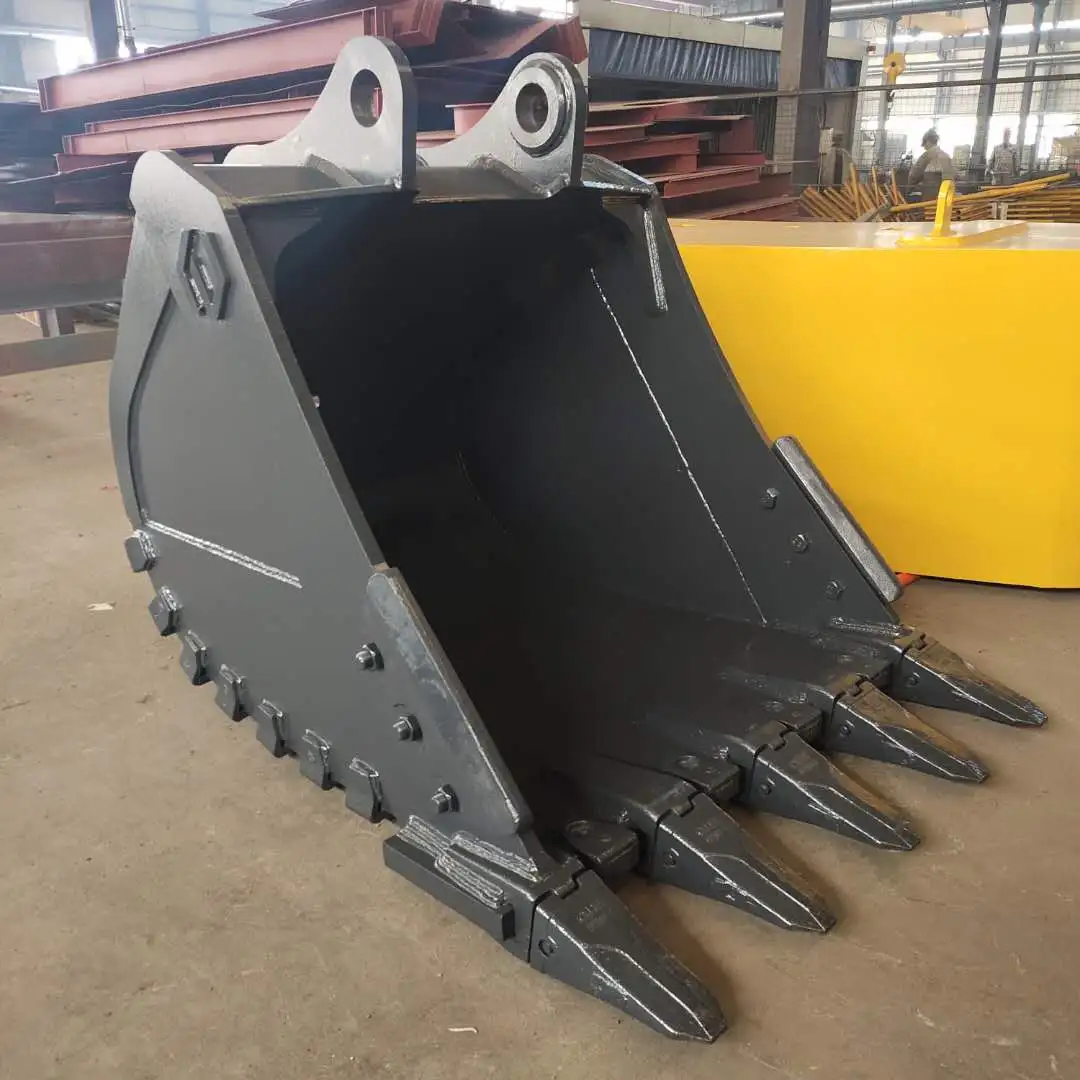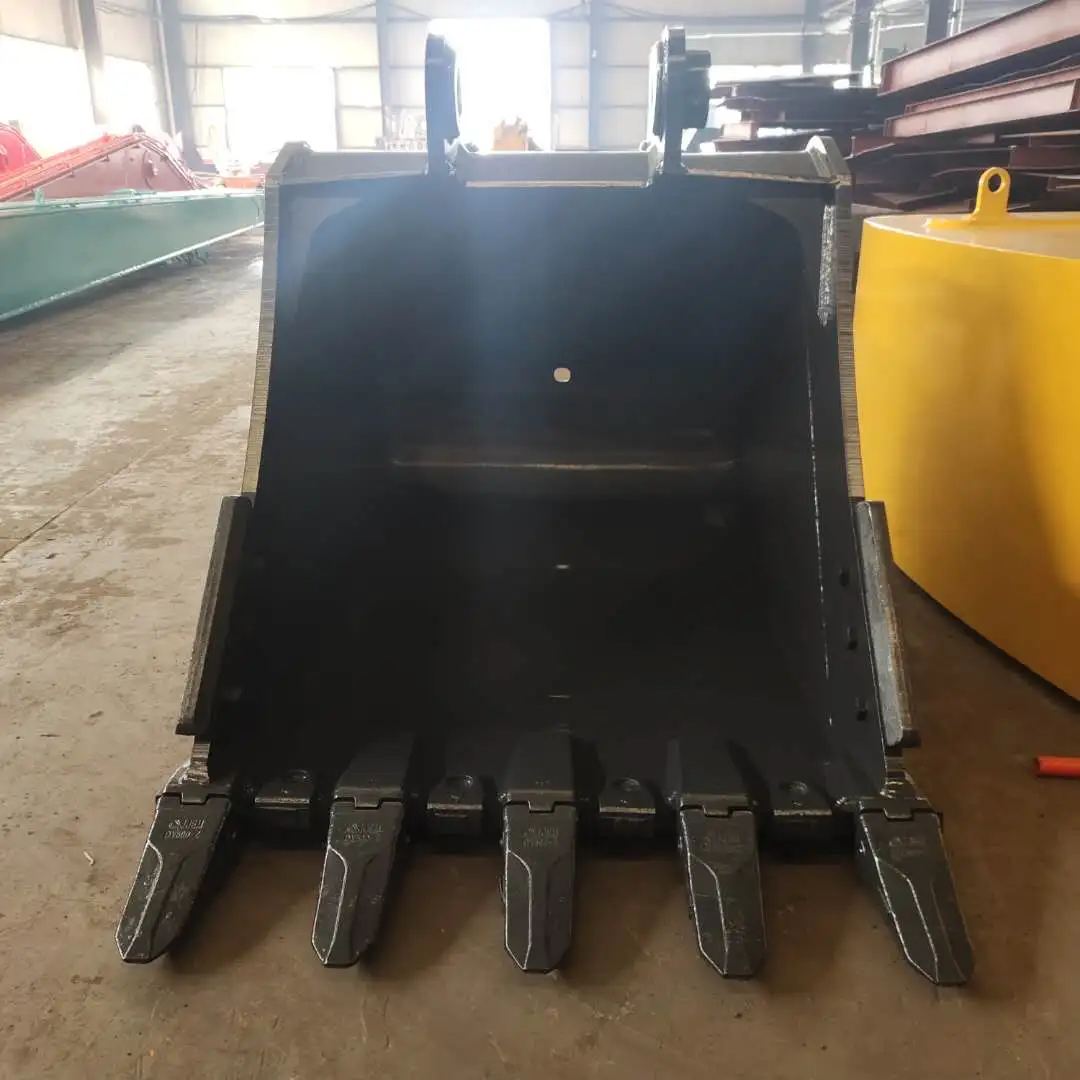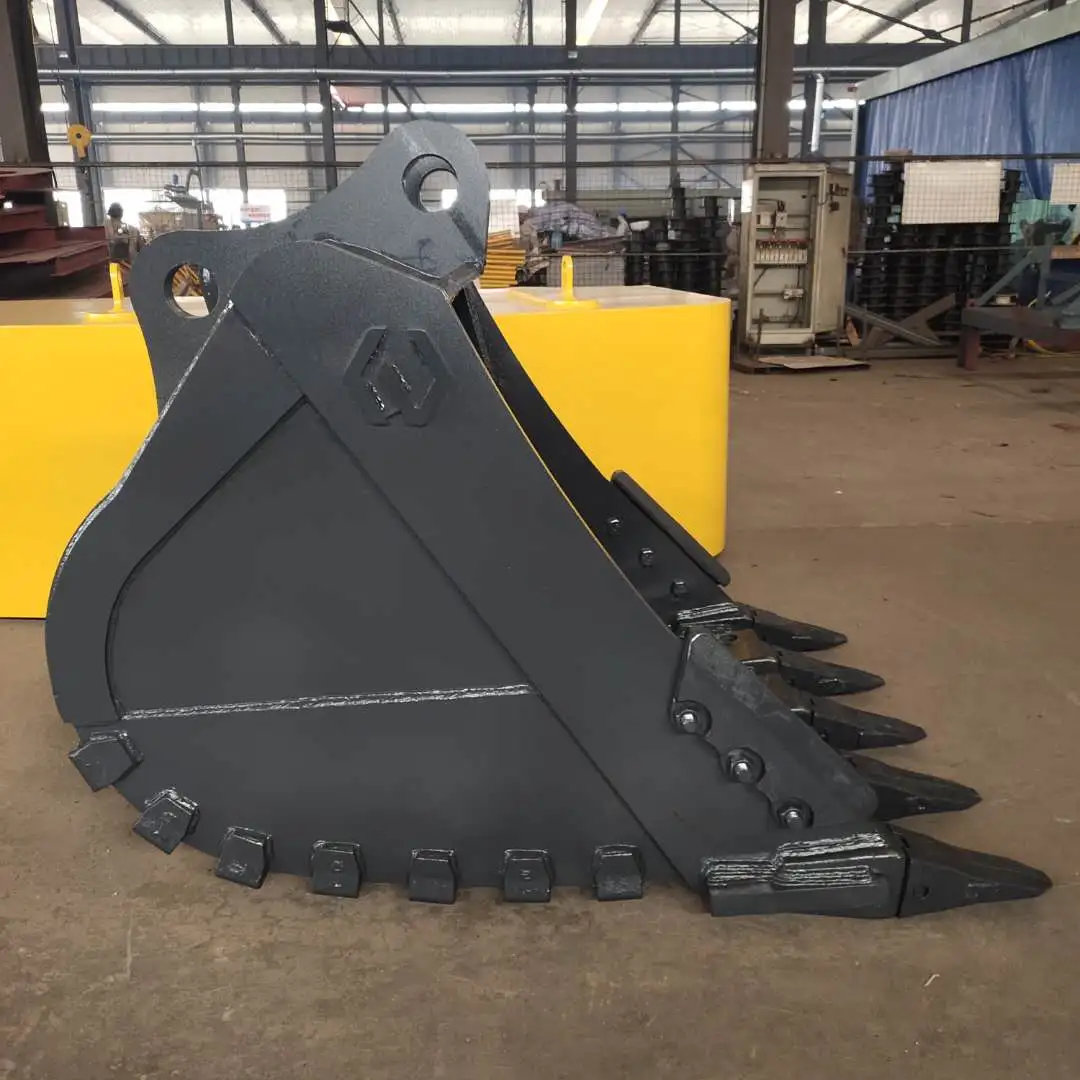What are standard bucket sizes?
Standard excavator bucket sizes represent industry-established capacity and dimensional specifications that manufacturers follow to ensure compatibility across different excavator models and applications. These standardized measurements help purchasing managers, engineers, and equipment supervisors select appropriate bucket configurations for specific operational requirements while maintaining reasonable cost control and reliable performance standards.

Standard Bucket Size For Small Excavators
Small excavators, typically weighing between 1.5 to 10 tons, utilize compact bucket designs optimized for precision work and maneuverability in confined spaces. These machines serve critical roles in urban construction, landscaping, utility installation, and light demolition projects where space constraints demand careful equipment selection. Understanding small excavator bucket specifications helps contractors optimize equipment performance while managing operational costs effectively.
Capacity Ranges and Dimensional Standards
Mini excavator buckets generally range from 0.1 to 0.8 cubic meters capacity, with width dimensions spanning 300 to 1200 millimeters depending on specific application requirements. The smallest units, designed for 1.5-3 ton excavators, typically feature 0.1-0.2 cubic meter capacities with widths around 300-600 millimeters. These compact dimensions enable precise digging in tight spaces while maintaining adequate material handling capabilities.
Mid-range small excavators weighing 4-7 tons accommodate bucket capacities from 0.3 to 0.5 cubic meters with corresponding widths of 700-1000 millimeters. These specifications balance productivity requirements with maneuverability needs common in residential construction and utility work. Weight considerations become particularly important as bucket size increases, requiring careful attention to excavator stability and lifting capacity limits.
The largest small excavator category, including 8-10 ton machines, supports bucket capacities reaching 0.6-0.8 cubic meters with widths approaching 1200 millimeters. These configurations provide substantial material handling capabilities while maintaining the operational flexibility that makes small excavators attractive for diverse applications including forestry work and waste management operations.
Application-Specific Design Variations
Trenching buckets for small excavators feature narrow widths typically ranging from 200-400 millimeters to create precise excavations for utility lines and drainage systems. These specialized configurations sacrifice capacity for accuracy, enabling operators to create clean, straight trenches with minimal surrounding disturbance. Depth capabilities often exceed standard digging buckets due to extended cutting edge profiles.
Grading buckets designed for small excavators emphasize wide, shallow profiles that facilitate smooth surface preparation and material spreading. These buckets often measure 1200-1500 millimeters in width while maintaining relatively shallow depths around 400-600 millimeters. The extended width enables efficient surface work while the reduced depth prevents overloading small excavator hydraulic systems.
Specialized attachments including thumbs, tilting mechanisms, and multi-purpose configurations add functionality while affecting overall bucket dimensions and capacity. These modifications must account for small excavator hydraulic flow rates and lifting capacities to maintain safe, efficient operation across diverse job site conditions.
Selection Criteria and Performance Optimization
Hydraulic system compatibility represents a critical factor when selecting bucket sizes for small excavators, as undersized hydraulic pumps limit breakout force and cycle times with oversized attachments. Manufacturers specify maximum recommended bucket capacities based on hydraulic flow rates, system pressure, and structural strength limitations. Exceeding these recommendations compromises performance and may void equipment warranties.
Ground pressure considerations become particularly important for small excavators working on soft or finished surfaces where track damage must be minimized. Larger buckets increase overall machine weight and ground pressure, potentially limiting access to sensitive areas or requiring additional ground protection measures. Balancing productivity needs with access requirements drives many small excavator bucket selection decisions.
Transport limitations including trailer weight restrictions and dimensional constraints influence bucket selection for contractors operating multiple job sites. Removable bucket configurations enable efficient transport while maintaining operational flexibility, though quick-coupler systems add weight and complexity that must be considered in overall equipment specifications.

Medium Excavator (10-30 tons) Standard Bucket
Medium excavators represent the workhorse category for most construction, mining, and infrastructure projects, offering optimal balance between capability and versatility. These machines typically weigh 10-30 tons and accommodate a wide range of excavator bucket attachments designed for diverse operational requirements. Understanding medium excavator bucket standards helps equipment managers select configurations that maximize productivity while maintaining reasonable operational costs.
Standard Capacity Classifications
Medium excavator buckets typically range from 0.8 to 2.0 cubic meters capacity, with specific sizing tied to excavator weight and hydraulic capabilities. Machines in the 10-15 ton range commonly utilize 0.8-1.2 cubic meter buckets with widths spanning 1200-1600 millimeters. These specifications provide substantial material handling capacity while maintaining maneuverability needed for most construction applications.
Mid-range medium excavators weighing 16-22 tons accommodate larger bucket capacities from 1.2-1.6 cubic meters with corresponding widths reaching 1800-2000 millimeters. These configurations enable efficient material movement for larger construction projects while maintaining reasonable cycle times and fuel consumption rates. Hydraulic system capacity becomes increasingly important as bucket size grows.
The largest medium excavator category, including 23-30 ton machines, supports bucket capacities approaching 1.8-2.0 cubic meters with widths potentially exceeding 2000 millimeters for specific applications. These substantial buckets enable high-productivity operation in major construction and mining applications while maintaining the mobility advantages of medium-class equipment.
Industry-Specific Bucket Configurations
Railway maintenance applications demand specialized bucket designs that accommodate ballast handling, debris removal, and precise material placement around track infrastructure. Railway buckets often feature modified profiles with reduced height to clear overhead obstacles while maintaining adequate capacity for efficient material handling. Width specifications typically range from 1400-1800 millimeters to match rail spacing requirements.
Mining applications require reinforced bucket construction with enhanced wear protection and structural strength to handle abrasive materials and high-stress operating conditions. Rock buckets for medium excavators feature reduced capacity compared to general-purpose designs, typically ranging 0.6-1.4 cubic meters, but incorporate heavy-duty construction that extends operational life in demanding environments.
Demolition work utilizes specialized bucket designs with reinforced cutting edges, side protection, and enhanced structural strength to handle concrete, steel, and mixed debris materials. These buckets often sacrifice some capacity for durability, with typical ranges of 0.8-1.5 cubic meters depending on specific demolition requirements and material characteristics.
Performance Optimization and Selection Guidelines
Hydraulic flow rate matching ensures optimal bucket performance by aligning attachment requirements with excavator capabilities. Medium excavators typically provide hydraulic flows ranging from 150-300 liters per minute, with specific requirements varying based on bucket size and operational demands. Proper matching prevents performance limitations and reduces component wear.
Breakout force calculations help determine appropriate bucket sizing based on soil conditions and operational requirements. Medium excavators generate breakout forces ranging from 80-200 kilonewtons, with specific capabilities depending on machine configuration and hydraulic system design. Understanding these limitations prevents equipment overload and ensures safe operation.
Cycle time optimization involves balancing bucket capacity with material characteristics and haul distances to maximize productivity. Larger buckets may reduce cycle frequency but can increase individual cycle times due to loading requirements and material weight. Professional operators learn to optimize bucket selection based on specific job site conditions and productivity goals.

General Standards And Selection Logic
Industry standards for excavator bucket sizing follow established engineering principles that balance performance requirements with safety considerations and operational efficiency. These standards help purchasing supervisors and engineers make informed decisions about equipment selection while ensuring compatibility across different manufacturers and applications. Understanding these underlying principles enables optimal equipment utilization across diverse operational environments.
International Standards and Certification Requirements
International Organization for Standardization (ISO) standards govern excavator bucket design and capacity rating methodologies to ensure consistency across global markets. ISO 7546 specifically addresses volumetric capacity rating procedures, while ISO 6016 covers earth-moving machinery terminology and definitions. These standards provide framework for capacity measurements and performance specifications that enable reliable equipment comparison and selection.
Society of Automotive Engineers (SAE) standards complement ISO requirements with specific focus on North American applications and operational conditions. SAE J296 addresses bucket capacity rating procedures with particular attention to struck and heaped capacity calculations. These standards ensure that excavator bucket attachments meet consistent performance criteria regardless of manufacturer or geographic origin.
Regional certification requirements may impose additional standards for specific applications including railway work, mining operations, or environmental remediation projects. These specialized requirements often mandate enhanced safety features, structural strength, or dimensional specifications beyond general construction standards. Understanding applicable requirements prevents costly redesign and ensures regulatory compliance.
Load Distribution and Structural Engineering Principles
Bucket sizing must account for material density variations and their impact on excavator stability and structural integrity. Dense materials like concrete or rock require smaller bucket volumes to maintain safe operating weights, while lighter materials permit larger capacities. Understanding these relationships helps operators maximize productivity while maintaining equipment safety margins.
Center of gravity calculations become critical as bucket size increases, particularly for applications involving material transport or working on slopes. Larger buckets shift the combined center of gravity forward and upward, potentially affecting excavator stability and tipping resistance. Professional equipment selection accounts for these factors when determining appropriate bucket specifications.
Stress distribution analysis ensures that bucket attachments do not exceed excavator structural limitations during normal operation. Pin loads, hydraulic cylinder forces, and boom stresses all increase with bucket size and material weight. Engineering analysis prevents overload conditions that could cause component failure or safety hazards.
FAQ
①What determines standard bucket size for different excavator classes?
Excavator weight, hydraulic capacity, lifting capability, and stability characteristics determine standard bucket sizes. Manufacturers balance these factors to optimize performance while maintaining safety margins.
②Can I use larger buckets than recommended standards?
Using oversized buckets may compromise safety, reduce performance, and void warranties. Always consult manufacturer specifications and consider hydraulic limitations before exceeding recommended sizes.
③How do material types affect standard bucket selection?
Dense materials require smaller bucket capacities to maintain safe operating weights, while lighter materials permit larger volumes. Consider material density when selecting appropriate bucket sizes.
④Are there different standards for different regions?
While ISO and SAE standards provide global frameworks, regional requirements may impose additional specifications for specialized applications like railway or mining work.
⑤How often do bucket size standards change?
Industry standards evolve gradually with technological advances and operational experience. Major revisions typically occur every 5-10 years, with minor updates addressing specific technical issues.
Discover TianNuo's Comprehensive Standard Bucket Solutions
Every TianNuo excavator bucket features high-strength wear-resistant steel construction with standard capacities ranging from 0.1 to 5.0 cubic meters, accommodating excavators from compact 1.5-ton units to heavy 50-ton machines. Our dimensional specifications span 500-2000 millimeters in width with weights from 100-2000 kilograms, ensuring optimal compatibility across various excavator models and operational requirements.
Contact our engineering specialists for detailed specifications, standard sizing recommendations, and customized solutions tailored to your operational requirements at tn@stnd-machinery.com. Discover how TianNuo's standard bucket solutions can optimize your equipment performance while ensuring compliance with international quality standards.
References
- International Organization for Standardization. "Earth-moving machinery — Volumetric capacity rating for buckets of hydraulic excavators and backhoe loaders." ISO 7546:2017 International Standard.
- Society of Automotive Engineers. "Earthmoving Machinery — Bucket Volumetric Capacity Rating." SAE J296 Standard, Revised Edition 2020.
- American National Standards Institute. "Construction Equipment — Bucket Size Classification and Selection Guidelines." ANSI/ASME B30.5 Mobile and Locomotive Cranes Standard, 2019.
- Construction Industry Institute. "Excavator Bucket Sizing and Performance Optimization for Construction Applications." CII Research Report 347-2, University of Texas Construction Engineering, 2021.
- International Association of Foundation Drilling. "Standard Specifications for Excavator Bucket Design and Capacity Rating." ADSC-IAFD Standard Practice Manual, 2022.
About Author: Arm
Arm is a leading expert in the field of specialized construction and railway maintenance equipment, working at Tiannuo Company.

